Attention! We replace the pads as a set on both sides of the car.
Periodically check the condition of the brake pads (see "Brake system - check of technical condition") and replace them without allowing wear of the linings to a thickness of less than 1.5 mm.
The work is shown on the brake mechanism of the right wheel.
Removing
1. We prepare the car for operations (see "Vehicle preparation for maintenance and repair").
2. Check the level of brake fluid in the tank. If the level is at the mark "MAX", we select a part of the liquid from the reservoir with a pear to avoid splashing it out when the pistons are pressed into the cylinders.
3. Remove the front wheel (see "Wheel - replacement").
4. We clean the brake mechanism from dirt with a rag and apply a penetrating lubricant with a rust converter to the guide pins.
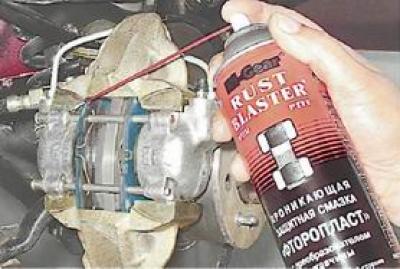
5. Use pliers to remove two cotter pins from the guide pins.
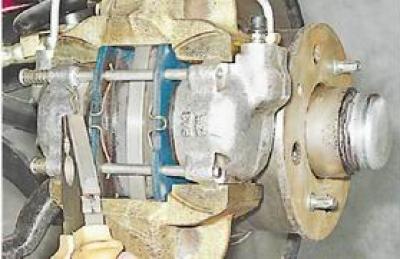
6. With a punch, we knock out the fingers from the eyes of the cylinders.
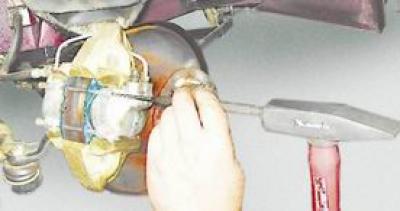
7. Remove the two clamping springs of the pads.
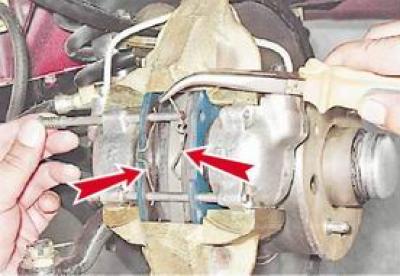
8. With sliding pliers or other suitable tool, we alternately sink the pistons into the cylinders through the block.
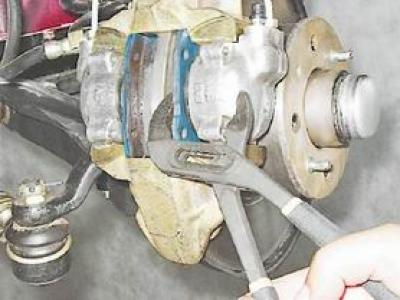
9. Remove the brake pads.
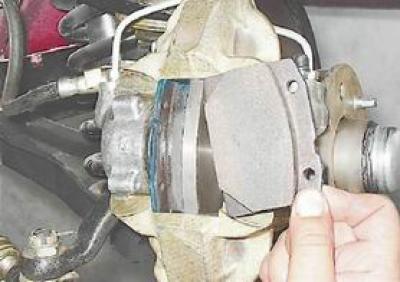
Attention! Do not press the brake pedal with the pads removed, this will lead to the extrusion of the pistons from the working cylinders.
Installation
1. Apply grease to the surface of the guide pins.
2. Install new brake pads in reverse order.
3. After replacing the pads, press the brake pedal several times to set the pistons to the working position and check the fluid level in the reservoir of the main brake cylinder. If necessary, add fluid to the required level (see "Hydraulic brake drive - checking the brake fluid level").
4. Similarly, we replace the pads on the opposite side.
